Best Risk Management Software
The top companies in the field of risk management software comprise Complinity, Optial SmartStart, Blueprint OneWorld, LogicGate, and audits.io. These software solutions empower organizations to proactively address risks by leveraging existing data and projections, aiding human decision-makers in risk identification and crisis prevention.



No Cost Personal Advisor
List of 20 Best Risk Management Software
Category Champions | 2024
Leading cloud-based business management solution
Optimize your risk management strategies with Oracle Fusion Cloud ERP. This risk management software offers unparalleled visibility and real-time insights across your organization's financials and supply chain management, empowering teams to make data-driven decisions. Read Oracle Fusion Cloud ERP Reviews
Explore various Oracle Fusion Cloud ERP features, compare the pricing plans, and unlock the potential of seamless operations by selecting the right software for your business.
- Material Requirement Planning
- Performance Management
- Drill Down Reports
- Billing & Invoicing
- Bills of Material
- Complaint Management
- Purchasing
- Check Processing
Oracle Fusion Cloud ERP Caters to
- StartUps
- SMBs
- Agencies
- Enterprises
Emergents | 2024
Manage Your Exposures
Mitigate risks and safeguard your business with Risk Hawk's cloud-based risk management platform. Conduct comprehensive risk assessments, analyses, and internal audits with ease. Additionally, this top risk management software facilitates third-party risk management, enabling you to prevent potential issues and optimize risk management. Learn more about Risk Hawk
Explore various Risk Hawk features, compare the pricing plans, and unlock the potential of seamless operations by selecting the right software for your business.
Features
View all Risk Hawk Features- ISO Compliance
- Compliance Management
- Internal Fraud Monitoring
- Key Performance Indicators
- Reputational Risk Management
- Disaster Recovery
- Value At Risk Calculation
- Incident Management
Risk Hawk Caters to
- StartUps
- SMBs
- Agencies
- Enterprises
Emergents | 2024
Software by Benchmark Gensuite
Explore Benchmark Gensuite is a risk analysis software for sustainability and risk management. With this suite, you can guarantee that your operations are running efficiently and safely, thanks to its clear oversight of your equipment management and security programs. Learn more about Benchmark Digital
Explore various Benchmark Digital features, compare the pricing plans, and unlock the potential of seamless operations by selecting the right software for your business.
Features
View all Benchmark Digital Features- Workflow Management
- Compliance Reporting
- KPIs
- Document Management
- Data Management
- Incident Reporting
- Dashboard
- Approval Process Management
Benchmark Digital Caters to
- StartUps
- SMBs
- Agencies
- Enterprises
Emergents | 2024
Manage risks in Vendor Relationships
Riskpro is one of the top risk management software vendors in India, with partners across the globe. It enables you to conduct risk-based internal, branch, and legal compliance audits. You can also ensure compliance with various regulatory requirements, including GDPR, HIPAA, VAPT, and more. Learn more about Riskpro
Explore various Riskpro features, compare the pricing plans, and unlock the potential of seamless operations by selecting the right software for your business.
Features
View all Riskpro Features- Workflow Approval
- Supplier Risk Management
- Action Item Tracking
- Dashboard
- Role-Based Permissions
- Vendor Management
- Web Access / Restoration
- Contract Management
Pricing
Annual Subscription
$ 25
User/Month
Riskpro Caters to
- StartUps
- SMBs
- Agencies
- Enterprises
Emergents | 2024
Software by Wolters Kluwer
TeamMate Audit's user-friendly interface, powerful analytics, and customized workflows simplify audit management and boost productivity. The software streamlines audit processes, tracks data, and delivers real-time insights to help organizations make informed decisions. With TeamMate Audit, businesses can ensure effective compliance management and optimize their audit performance. Learn more about TeamMate Audit
Explore various TeamMate Audit features, compare the pricing plans, and unlock the potential of seamless operations by selecting the right software for your business.
Features
View all TeamMate Audit Features- Response Management
- Risk Assessment
- Mobile Access
- Internal Controls Management
- Corrective Actions (CAPA)
- Issue Management
- Alerts/Notifications
- Dashboard
TeamMate Audit Caters to
- StartUps
- SMBs
- Agencies
- Enterprises
Emergents | 2024
Software by Corporater
Corporater is a leading risk assessment software that helps you identify and manage organizational risks. You can proactively monitor, address, and report emerging risks from one platform. It allows you to set up automatic risk assessment workflows and notifications to alert stakeholders across departments. Learn more about Corporater
Explore various Corporater features, compare the pricing plans, and unlock the potential of seamless operations by selecting the right software for your business.
Features
View all Corporater Features- Data Visualization
- Strategic Planning
- KPIs
- Risk Assessment
- Trend / Problem Indicators
- Compliance Management
- Interactive
- OSHA Compliance
Corporater Caters to
- StartUps
- SMBs
- Agencies
- Enterprises
Contenders | 2024
Software by Parapet
Parapet integrated risk management system solutions help companies mitigate risks. It includes audit and assurance, vendor management, business continuity, and compliance. This best risk management tool also provides real-time insights into your organization’s risk posture, enabling you to make more informed decisions quickly. Read Parapet Reviews
Explore various Parapet features, compare the pricing plans, and unlock the potential of seamless operations by selecting the right software for your business.
Features
View all Parapet Features- Auditing
- Internal Controls Management
- ISO Compliance
- Dashboard
- Reputational Risk Management
- Risk Alerts
- FDA Compliance
- Audit Trail
Parapet Caters to
- StartUps
- SMBs
- Agencies
- Enterprises
Emergents | 2024
Software by Scrut, Inc
Automate your risk management with the best risk assessment software. Scrut Automation lets you build your own risk-first infosec program to manage multiple compliance audits effortlessly. Moreover, you can monitor risks across your infrastructure in real time with automated alerts and reminders. Learn more about Scrut Automation
Explore various Scrut Automation features, compare the pricing plans, and unlock the potential of seamless operations by selecting the right software for your business.
Scrut Automation Caters to
- StartUps
- SMBs
- Agencies
- Enterprises
Emergents | 2024
Accountable makes HIPAA compliance simple
Whether you need to comply with HIPAA, GDPR, CCPA, or ADA, this risk analysis software makes it easier to meet the requirements. It comes with pre-built compliance playbooks to help you get started instantly. It also has an incident response playbook that guides you on appropriate actions when something happens. Learn more about Accountable
Explore various Accountable features, compare the pricing plans, and unlock the potential of seamless operations by selecting the right software for your business.
Features
View all Accountable Features- Training Management
- Certification & Licensing
- Activity Monitoring
- Document Management
Pricing
Basic Plan
$ 99
Per Month
Plus
$ 249
Per Month
Professional
$ 449
Per Month
Accountable Caters to
- StartUps
- SMBs
- Agencies
- Enterprises
Emergents | 2024
Software by TRUCE
Designed for companies with field workers (like drivers, construction workers, etc.), the Truce risk management platform helps stop digital distractions and keeps employees productive. It lets you create and track policies and protect your employees and IP. Truce offers 24/7 customer support to answer all your queries instantly. Learn more about TRUCE
Explore various TRUCE features, compare the pricing plans, and unlock the potential of seamless operations by selecting the right software for your business.
Features
View all TRUCE Features- Remote Update / Installation
- Activity Monitoring
- Incident Management
- Vehicle Management
- Alerts/Notifications
- Productivity Analysis
- GPS tracking
- Exceptions Management
TRUCE Caters to
- StartUps
- SMBs
- Agencies
- Enterprises
Emergents | 2024
Software by Enablon
Enablon is a leading IT risk management software company that helps protect your company from workplace hazards, comply with regulations, and perform environmental reporting. It uses artificial intelligence and machine learning to suggest the most effective action plans in case of unforeseen events. Learn more about Enablon
Explore various Enablon features, compare the pricing plans, and unlock the potential of seamless operations by selecting the right software for your business.
Features
View all Enablon Features- Lab Data Transfer
- Formula Builder Tool
- Data Entry Verification
- Sampling Planner
- Regulatory and ad Hoc Reporting Tools
- Mobile Data Entry
- Lab Information System
- Chain-of-custody Labels and Forms
Enablon Caters to
- StartUps
- SMBs
- Agencies
- Enterprises
Emergents | 2024
Software by Reciprocity
With RiskOptics' (Formerly ZenGRC) risk management software, you can enhance your strategic capabilities by linking risk with your business strategy. By demonstrating the direct influence of risk on crucial business ventures, RiskOptics empowers your organization to make more informed decisions that account for potential risks. Learn more about ZenGRC
Explore various ZenGRC features, compare the pricing plans, and unlock the potential of seamless operations by selecting the right software for your business.
Features
View all ZenGRC Features- ISO Compliance
- Sarbanes-Oxley Compliance
- Operational Risk Management
- Task Management
- Internal Controls Management
- Risk Assessment
- PCI Assessment
- Audit Trail
Pricing
Start Up
$ 2500
month with a one-time onboarding fee
Professional
$ 2500
month with a one-time onboarding fee
Enterprise
$ 6000
month with a one-time onboarding fee
ZenGRC Caters to
- StartUps
- SMBs
- Agencies
- Enterprises
Emergents | 2024
Software by AuditBoard
AuditBoard is a risk analysis software integrating audit, risk, ESG, and compliance. Besides, since it connects data across departments, it gives you a comprehensive view of potential risks in real time. Furthermore, you can use its flexible API to connect it with all your tools and reduce risks. Learn more about AuditBoard
Explore various AuditBoard features, compare the pricing plans, and unlock the potential of seamless operations by selecting the right software for your business.
Features
View all AuditBoard Features- ISO Compliance
- Auditing
- Audit Trail
- Risk Assessment
- Legal Risk Management
- Business Process Control
- Risk Alerts
- Exceptions Management
AuditBoard Caters to
- StartUps
- SMBs
- Agencies
- Enterprises
Emergents | 2024
Software by Cost Management Performance Group
VendorInsight is a leading risk management software vendor offering several advanced features. It has vendor risk assessment, automated vendor monitoring, fourth-party vendor tracking, concentration risk analysis, and more. What sets it apart from other risk management solution companies is that it helps protect your business from your vendor network or the fourth parties they subcontract. Learn more about VendorINSIGHT
Explore various VendorINSIGHT features, compare the pricing plans, and unlock the potential of seamless operations by selecting the right software for your business.
Features
View all VendorINSIGHT Features- Vendor Qualification Tracking
- Transaction History
- Supplier Master Data
- Vendor Performance Rating
- Audit Management
- Contact Management
- Self Service Portal
VendorINSIGHT Caters to
- StartUps
- SMBs
- Agencies
- Enterprises
Emergents | 2024
See Risk. Discover Value.
Unlike other risk management software solutions, Resolver helps you frame every risk regarding business impact. This enables you to prioritize and plan intelligently on how to address them. Furthermore, it covers various risk and compliance issues, including IT risk, regulatory change tracking, internal audit, and vendor risk. Learn more about Resolver Risk Management
Explore various Resolver Risk Management features, compare the pricing plans, and unlock the potential of seamless operations by selecting the right software for your business.
- Attendee Management
- Controls Testing
- Business Process Control
- Vendor Management
- Incident Management
- Exceptions Management
- Risk Assessment
- Legal Risk Management
Resolver Risk Management Caters to
- StartUps
- SMBs
- Agencies
- Enterprises
Emergents | 2024
Software by CURA Software
CURA Risk Management software is one of the leading risk assessment tools for businesses of all sizes. It offers many features, including enterprise risk management, operational risk management, incident management, policy management, and compliance management. You can also conduct internal audit risk assessments to avoid issues. Learn more about CURA Risk Management
Explore various CURA Risk Management features, compare the pricing plans, and unlock the potential of seamless operations by selecting the right software for your business.
- Compliance Management
- Audit Trail
- Auditing
- Alerts/Notifications
- Business Process Control
- Operational Risk Management
CURA Risk Management Caters to
- StartUps
- SMBs
- Agencies
- Enterprises
Emergents | 2024
Software by Tracker Networks
Essential ERP is another best risk management tool that helps identify, manage, and monitor risk. It has a visual model that allows stakeholders to communicate and analyze multiple risk scenarios in a single diagram. Moreover, you can automate ESG initiatives and tracking to save time and eliminate manual errors. Learn more about Essential ERM
Explore various Essential ERM features, compare the pricing plans, and unlock the potential of seamless operations by selecting the right software for your business.
Features
View all Essential ERM Features- Risk Assessment
- Legal Risk Management
- Reputational Risk Management
- Internal Controls Management
- Operational Risk Management
Essential ERM Caters to
- StartUps
- SMBs
- Agencies
- Enterprises
Software by Workiva
Workiva risk management system software helps manage risks across departments, including compliance, audit, and financial reporting. It keeps you on top of the latest regulations and standards, ensuring your reports reflect the same. You can also automate data reporting to ensure you don’t miss anything important. Read Workiva Reviews
Explore various Workiva features, compare the pricing plans, and unlock the potential of seamless operations by selecting the right software for your business.
Features
View all Workiva Features- Ad Hoc Reports
- Marketing Reports
- Financial Reports
- Dashboard Creation
- Collaboration
- Drill Down
- Sales reporting
- Data Visualization
Workiva Caters to
- StartUps
- SMBs
- Agencies
- Enterprises
Contenders | 2024
Software by Isolocity
Isolocity is an inventive SPC data collection software solution built for small, medium, as well as large-sized manufacturing businesses. This all-in-one cloud-based application, known for its intuitiveness and flexibility, can be accessed anytime, anywhere. Read Isolocity Reviews
Explore various Isolocity features, compare the pricing plans, and unlock the potential of seamless operations by selecting the right software for your business.
Features
View all Isolocity Features- Calibration Schedules
- File Recovery
- Root Cause Analysis
- Statistical Data Reporting
- Quality Control
- Document Indexing
- Document Retention
- Audit Planning
Isolocity Caters to
- StartUps
- SMBs
- Agencies
- Enterprises
Contenders | 2024
GRC -Regulatory Contractual & Internal Compliances
Ricago Compliance Management System (CMS) is an enterprise-class compliance management system capable of effectively tracking & managing compliance items, notices, and critical action items related to regulatory & internal compliance requirements of an organization. Read Ricago Reviews
Explore various Ricago features, compare the pricing plans, and unlock the potential of seamless operations by selecting the right software for your business.
Features
View all Ricago Features- Risk Alerts
- Environmental Compliance
- Controls Testing
- Audit Trail
- OSHA Compliance
- Version Control
- FDA Compliance
- Archiving & Retention
Ricago Caters to
- StartUps
- SMBs
- Agencies
- Enterprises
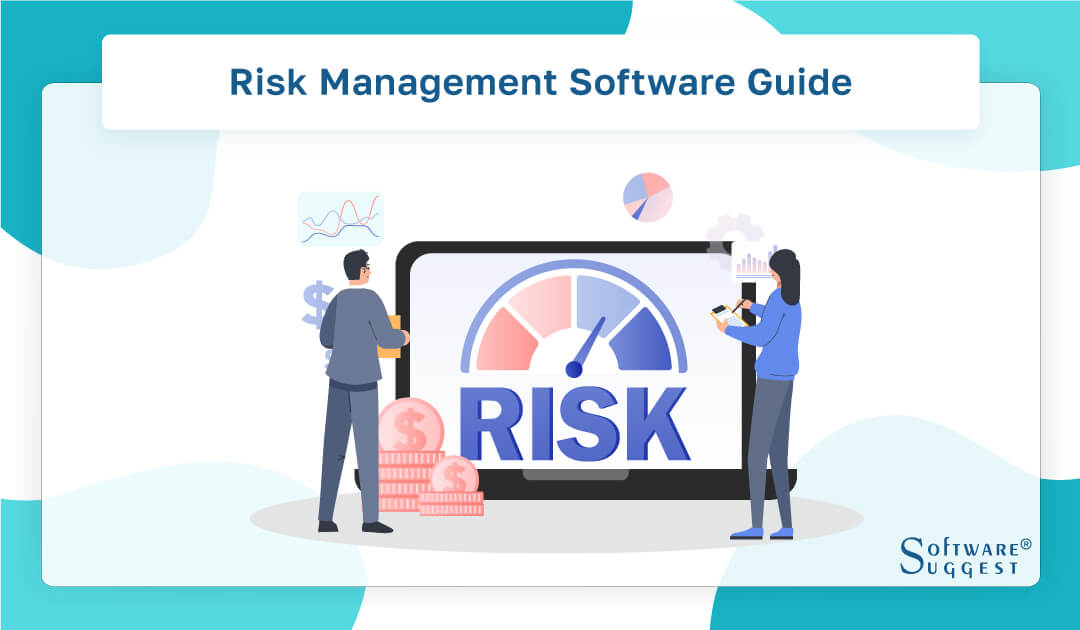
Any organization must have a risk management strategy in place if it is to accomplish its objectives and safeguard its resources. It entails locating, evaluating, and ranking risks that might harm a company's operations, finances, reputation, and overall success. Risk management aims to create and implement ways to reduce or eliminate certain risks, protecting the organization's continuity and long-term viability.
A systematic strategy is required for effective risk management, as well as creating a framework for managing risks that include explicit policies, processes, and guidelines, as well as ongoing evaluation and monitoring to confirm its efficacy.
For businesses of all sizes and types, risk management has grown more crucial in today's volatile and often changing business climate.
What is Risk Management Software?
Risk management software is a computer program specifically designed to aid organizations in identifying, evaluating, and managing a plethora of potential risks that may threaten their operations.
This software includes various tools and features that systematically assess different types of risks, including financial, operational, strategic, and reputational risks, and develop comprehensive strategies to reduce or eliminate them.
In addition, this software assists users in overseeing and monitoring risk management operations, as well as providing real-time updates on various risks through reports and alerts. Moreover, some risk management software vendors provided integrations with other enterprise software, such as accounting, compliance, or project management tools, to provide organizations with a more holistic view of their risk environment.
How Does Risk Management Software Work?
Risk management software provides a structured and systematic approach to identifying, assessing, and managing risks within an organization. The software commonly follows a step-by-step procedure comprising risk identification, evaluation, mitigation, and monitoring.
Risk management software for small businesses assists users in identifying potential hazards to their firm during the risk identification phase by compiling data from various sources, such as internal data, outside reports, or expert opinions.
Each detected risk is assessed for likelihood and potential impact throughout the risk assessment process. Usually, a score or rating is given based on predetermined criteria to do this. This IT risk management software enables users to rank hazards and concentrate on those most dangerous to the company.
Types of Risk Assessment Software
Several types of risk management software are available, each designed to address specific types of risks and challenges organizations face. Some of the most common types include:
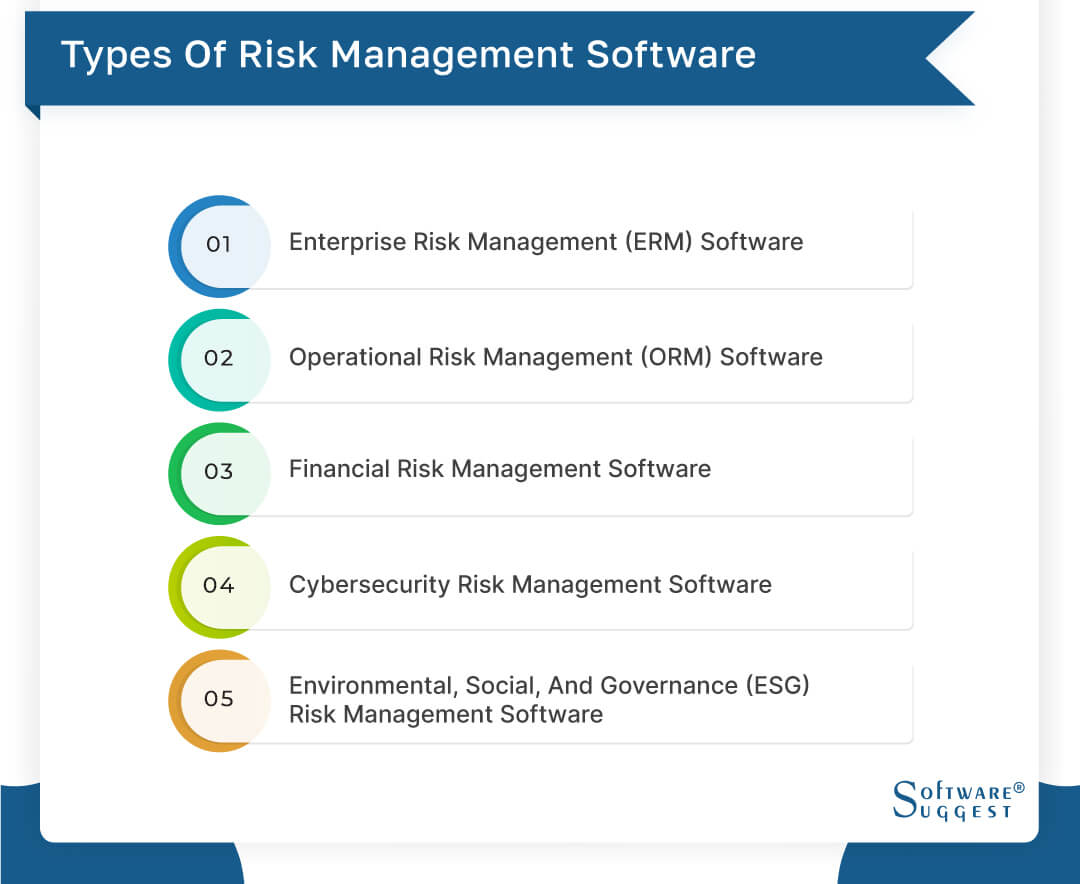
-
Enterprise Risk Management (ERM) Software
ERM software offers a thorough method for discovering, evaluating, and managing risks throughout a company. Typical features include dashboards for tracking and reporting risk management activities, risk registers, and tools for risk assessment.
-
Operational Risk Management (ORM) Software
Software for operational risk management (ORM) focuses on detecting and controlling risks related to an organization's daily operations. This could involve threats from human mistakes, process breakdowns, or disruptions in technology.
-
Financial Risk Management Software
Credit, market, and liquidity hazards are just a few of the risks that businesses need to manage when conducting financial transactions. Financial risk management software is meant to assist with this. It might have characteristics like portfolio management tools, risk modeling capabilities, and scenario analysis tools.
-
Cybersecurity Risk Management Software
Software for managing cybersecurity risks assists enterprises in controlling risks associated with cyber threats and attacks. This may contain functions like threat intelligence feeds, incident response protocols, and vulnerability assessment tools.
-
Environmental, Social, and Governance (ESG) Risk Management Software
Software for identifying and managing risks connected to (ESG) concerns is known as environmental, social, and governance (ESG) risk management software. Risks associated with social injustice, the environment, and corporate governance standards are all included.
Benefits of Best Risk Management Software
Risk assessment software provides numerous benefits to organizations that use it. Here are some of the key advantages of using risk assessment software:
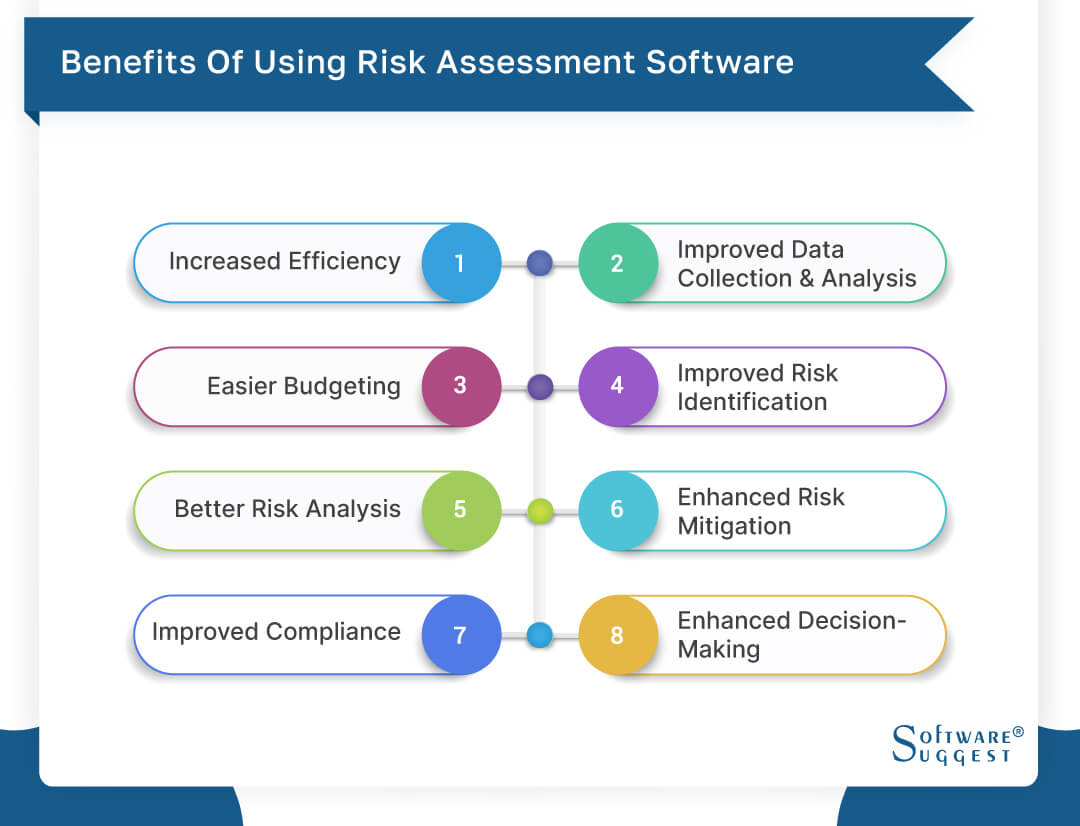
-
Increased efficiency
Software for risk assessment simplifies the process of locating, evaluating, and managing hazards. It streamlines the entire process and lessens the effort for risk managers by automating many of the manual steps involved in risk assessment.
-
Improved data collection and analysis
Large volumes of risk-related data are easier to gather and analyze thanks to risk analysis software. As a result, businesses can have a more thorough awareness of their risk environment and make better risk management choices.
-
Easier budgeting
The development of more precise and effective risk management plans is made possible by the use of best risk assessment software, which also facilitates budgeting for risk management activities. This results in better budget management with less hassle.
-
Improved risk identification
By providing capabilities for data analysis, trend identification, and risk scenario probability evaluation, risk assessment software aids organizations in more effectively recognizing possible dangers.
-
Better risk analysis
Key decision makers can analyze risk levels quickly with the powerful features that risk assessment software offers for examining and evaluating the potential effects of various hazards. This enables businesses to rank risks according to their probable consequences and create better risk management plans.
-
Enhanced risk mitigation
By offering tools for evaluating the efficacy of various risk management measures and finding areas for improvement, risk assessment software aids organizations in developing more effective risk mitigation strategies.
-
Improved compliance
By offering tools for tracking and monitoring compliance activities, risk assessment software aids firms in remaining compliant with pertinent legislation and standards.
-
Enhanced decision-making
Decision-makers have the data they need to make more educated decisions about risk management thanks to risk assessment software. Better decision-making and more successful risk management tactics result from this.
Features of Risk Assessment Software
Risk management software is a valuable tool for organizations of all sizes to identify, assess, monitor, and mitigate risks that may affect their operations, reputation, and bottom line.
These risk analysis software solutions come with various features that can help businesses mitigate risks effectively. Below, we have discussed the most common risk management features.
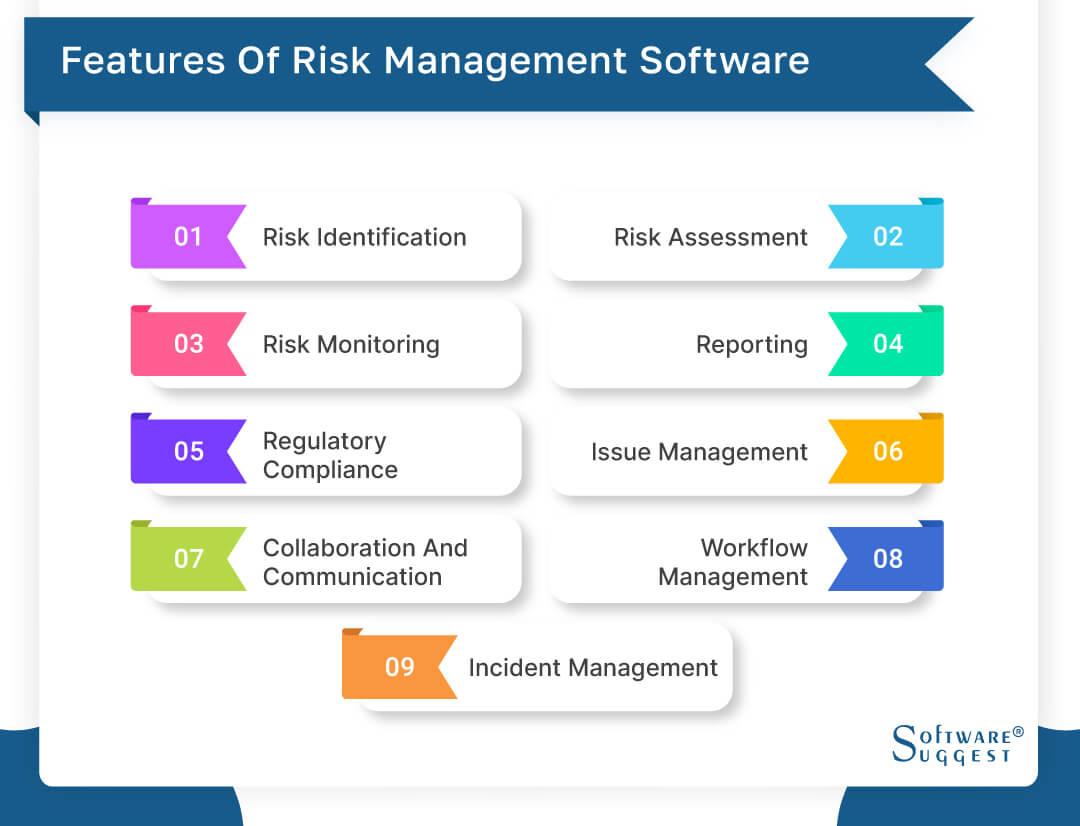
-
Risk identification
Any risk management approach must begin with risk identification. Organizations can use risk management platforms to discover possible risks by employing brainstorming, SWOT analysis, and environmental scanning strategies. Software users may also be able to manually enter data or import data from outside sources like databases, spreadsheets, or documents. On the basis of the previous data, risk management software can inculcate machine learning techniques to identify and classify threats.
-
Risk assessment
Risk assessment involves analyzing the potential impact and likelihood of risks occurring. Business risk management software can help organizations conduct quantitative and qualitative risk assessments. The software may allow users to assign likelihood and impact values to different risks and calculate the overall risk score. Risk management software may also provide predefined risk templates based on industry standards or regulations.
-
Risk monitoring
Risk monitoring involves tracking risks over time and evaluating the effectiveness of mitigation strategies. Risk management software can help organizations monitor risks by setting up alerts, notifications, and reminders. Risk management software may also provide real-time dashboards and reports that show the status of risks and mitigation efforts.
-
Reporting
The core components of risk management software are reporting and dashboards. The program may allow users to build their reports and dashboards or provide prepared reports and dashboards. The reports could contain details like risk status, risk scores, risk reduction tactics, and trends. Risks and mitigation activities may be visualized in real-time through the dashboards.
-
Regulatory compliance
A crucial component of risk management, especially for businesses operating in highly regulated sectors, is regulatory compliance. By offering predefined compliance frameworks and checklists, risk management software can assist firms in adhering to rules. Depending on their particular requirements, users of the software may also be able to adapt to the compliance standards.
-
Issue management
The task of issue management includes keeping track of and resolving problems that develop during the risk management procedure.
Organizations can manage problems by assigning tasks, establishing workflows, and monitoring progress using risk management software solutions. Users may also be able to rank concerns according to their likelihood and impact using risk management software.
-
Collaboration and communication
In the course of risk management, issues may come up that need to be tracked down and resolved. The assignment of tasks, creation of workflows, and progress monitoring provided by risk management software can assist organizations in managing problems. Users may be able to rank situations according to their significance in utilizing the software.
-
Workflow management
To increase efficacy and efficiency, workflow management entails automating the risk management process. By setting up automatic activities and notifications, risk management software can assist firms in managing workflows. Predefined workflows based on industry standards or best practices may also be offered by the program.
-
Incident management
Responding to dangers that have already occurred is incident management. The provision of prepared incident response plans and checklists by risk management software can aid organizations in managing incidents. Users may be able to modify incident response plans using the software to suit their own requirements.
How to Choose the Right Risk Management Software?
When choosing the best enterprise risk management solution, there are several factors that you should consider. Here are some of the key factors to keep in mind:
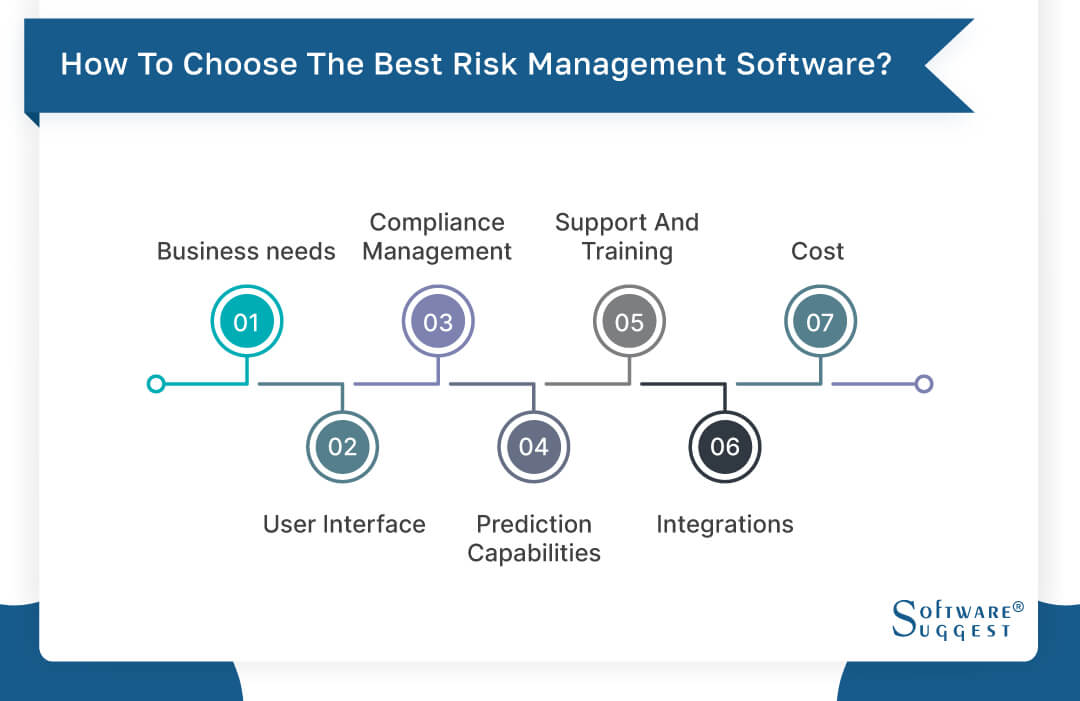
-
Business needs
Your company's particular needs for risk management should be catered for by the program. This covers the different risk categories you deal with, the size of your business, and the complexity of your risk management procedures.
-
User interface
The best risk analysis software ought to feature an easy-to-use interface that makes it simple for your staff to use. By ensuring that everyone is on the same page, can assist in increasing adoption rates.
-
Compliance management
You should be able to manage compliance with pertinent rules and standards with the aid of the software. Things like HIPAA, GDPR, and ISO standards may fall under this category.
-
Prediction capabilities
You should be able to recognize prospective hazards and forecast results when using risk management software. Predictive analytics and machine learning capabilities are a couple of examples of this.
-
Support and training
To ensure you get the most out of the program, the vendor should give thorough support and training. User forums, webinars, and online training are a few examples of this.
-
Integrations
Your CRM, HR software, and accounting software are just a few examples of other tools and systems that the software should be able to interact with. This can save duplication of effort and streamline your risk management procedures.
-
Cost
You should consider the cost of the risk analysis software and whether it fits within your budget. Be sure to consider the upfront costs and any ongoing maintenance or subscription fees.
Top 5 Risk Management Software Comparison
|
Name
|
Free Trial
|
Demo
|
Pricing
|
|---|---|---|---|
| 14 Days |
Yes |
$19/month | |
|
30 Days |
Yes | $625/month | |
|
30 Days |
Yes |
$49/month | |
| 15 Days |
Yes |
$49/month | |
|
14 Days |
Yes |
$15/month |
Before you select any risk management tools, you need to compare different options and understand their features, functionalities, and pricing. Below we have listed the 5 best enterprise risk management software that you can consider for your business.

Risk Hawk is a cloud-based risk management solution provider that enables businesses to manage and mitigate risks effectively. The software offers a range of features such as risk assessment, risk identification, risk analysis, risk evaluation, and risk reporting. Risk management software is highly customizable and can be tailored to business needs.
Features
- Risk assessment and analysis
- Risk mitigation
- Risk reporting
- Dashboard
- Compliance management
Pros
- Highly customizable to meet the specific needs of your business
- User-friendly interface to navigate
- Automated risk assessment, saving time and effort
- Cost-effective compared to other risk management software
Cons
- Fewer integration options with other software
- Lack of advanced features such as predictive analytics
Pricing
Risk Hawk offers a 14-day free trial, after which you can choose from their pricing plans:
- Basic: $19/month
- Premium: $49/month
- Professional: $99/month
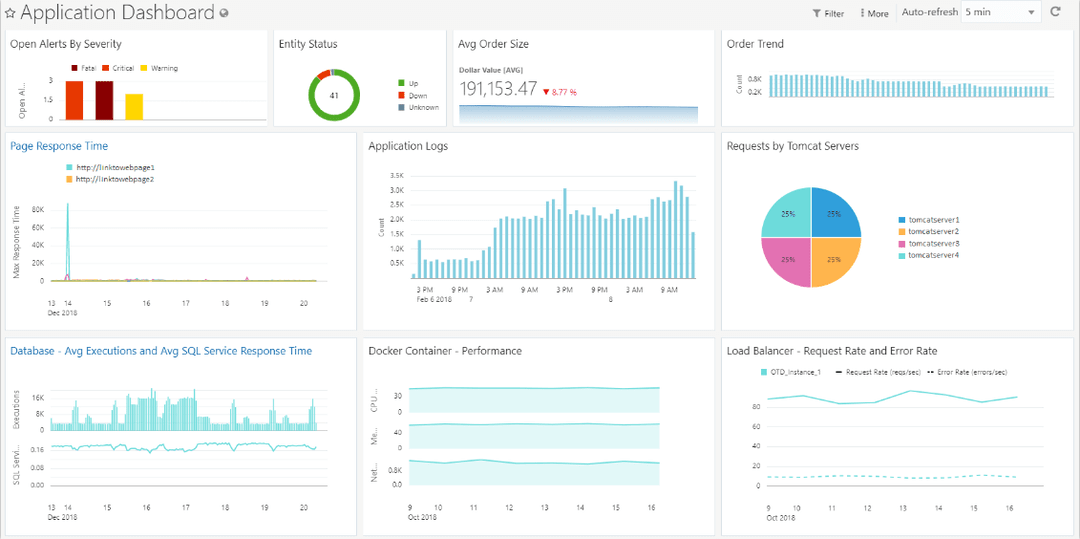
Oracle Fusion Cloud ERP is one of the best risk assessment software that offers a range of features such as financial management, procurement, project management, risk management, and compliance management. The software is highly scalable and can be used by businesses of all sizes.
Features
- Risk management
- Compliance management
- Financial management
- Procurement
- Project management
Pros
- Highly scalable & can be used by businesses of all sizes
- Advanced features such as predictive analytics
- Integration options with other software
- Comprehensive financial management
Cons
- The software may require training
- It’s expensive compared to other tools
- The software has limited customization options
Pricing
- Oracle Fusion Cloud ERP offers customized pricing based on the specific needs of your business.
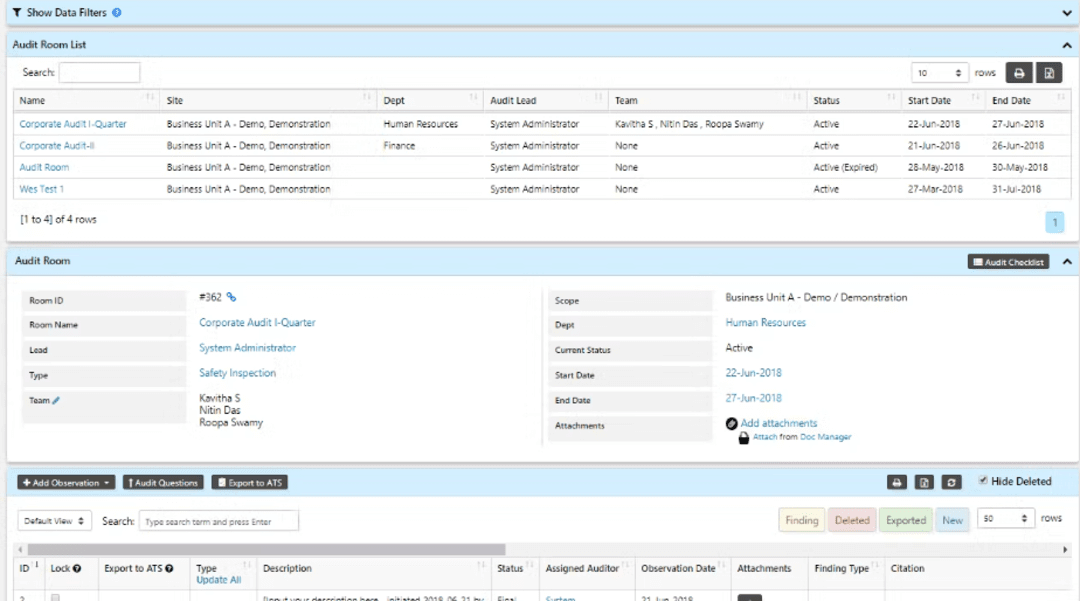
Benchmark is the top risk management software that enables businesses to identify and mitigate risks effectively. The software offers a range of features such as risk assessment, risk identification, risk analysis, risk reporting, and compliance management.
Features
- Risk assessment and analysis
- Risk identification
- Risk mitigation
- Risk reporting
- Compliance management
Pros
- User-friendly interface for smooth navigation
- Customizable to meet the specific needs of your business
- Comprehensive reporting and insights into risks and their status
- Affordable and budget-friendly platform
Cons
- Less integration options with other software
- The software lacks some advanced features, such as predictive analytics
Pricing
Benchmark offers a 30-day free trial, after which you can choose from their pricing plans.
- Starter: $49/month
- Professional: $149/month
- Enterprise: Custom pricing

Riskpro is a risk management software that enables businesses to manage and mitigate their risks effectively. The software offers a range of features such as risk assessment, risk identification, risk analysis, risk reporting, and compliance management.
Features
- Risk assessment and analysis
- Risk identification
- Risk mitigation
- Risk reporting
- Compliance management
Pros
- Easy to use interface
- Customizable as per the requirements
- Comprehensive reporting for better insights
Cons
- Limited integration options with other tools
- Features can be more advanced
Pricing
Riskpro offers a 15-day free trial, after which you can choose from their pricing plans:
- Basic: $49/month
- Professional: $99/month
- Enterprise: Custom pricing

Parapet is among the best risk management tools designed to help businesses identify, manage, and mitigate risks effectively. The software offers a range of features such as risk assessment, risk identification, risk analysis, risk reporting, and compliance management.
Features
- Risk assessment and analysis
- Risk identification
- Risk mitigation
- Risk reporting
- Compliance management
Pros
- User-friendly interface
- Personalized dashboard
- Advanced reporting and analytics
Cons
- Limited integration options
- The software pricing is expensive
Pricing
Parapet offers a 14-day free trial, after which you can choose from their pricing plans:
- Essential: $15/month
- Professional: $45/month
- Enterprise: Custom pricing
Challenges in Risk Assessment Software
Every software comes with its own set of challenges, and below are the main challenges that users of risk assessment software face.

-
Training
Training staff to utilize risk assessment software efficiently is one of the biggest problems businesses encounter when deploying the program. Software for risk assessment can be complicated and work only with professional understanding. As a result, businesses must spend time and money educating their staff members to use the program.
-
Technical and user errors
Technical problems like software bugs or hardware malfunctions that can lead to inaccuracies in the risk assessment process are another difficulty that businesses may encounter while utilizing risk assessment software. Inaccuracies can also result from user mistakes like wrong data entry or improper program usage. Therefore, businesses must have a strategy in place to deal with technological difficulties as soon as they arise and to give staff members the necessary training to reduce user errors.
-
Data quality
The quality of the data input has a big impact on the accuracy of risk assessment software. Ensuring that all data is current and accurate can be difficult, and incomplete or faulty data may result in inaccurate risk evaluations. To ensure that data is accurate, full, and up to date, businesses must set data quality standards and implement processes.
-
Complexity
The complexity and complexity of the software may make it challenging to use excellent risk analysis software. Businesses must therefore ensure that the software they select is easy to use and navigate. Organizations must also provide staff workers with the training and support they need to use the application effectively.
-
Security
Security is a major problem since risk assessment software may include sensitive and secret data. Businesses must make sure that the software they choose is safe and that the necessary safeguards are in place to protect the data.
-
User adoption
The success of risk assessment software depends on user adoption. Therefore, businesses must make sure that employees are aware of the benefits and value of using the program. Organizations must also provide enough training and support to encourage user adoption.
Market Trends in Risk Management Software
Even in risk management, there are various trends that keep changing. Therefore, every organization needs to stay up-to-date with emerging trends and new buyer preferences.

-
Artificial Intelligence (AI)
In risk management software, AI is a trend that is gaining popularity. Businesses can examine data and spot possible threats more precisely and quickly with the aid of AI. Additionally, it may assist businesses in automating a number of processes, including data entry and report generation, which can help them save time and money.
-
Cloud-based solutions
Due to their scalability, affordability, and ease of deployment, cloud-based risk management software systems are growing in popularity. Cloud-based solutions improve cooperation and productivity by enabling businesses to use risk management software from any location, at any time, and on any device.
-
Integrated GRC
Integrated (GRC) software is gaining popularity as more complete risk management tools are sought after by enterprises. Using integrated GRC software, firms may better manage risks, assure regulatory compliance, and monitor performance.
-
Sustainability and ESG
Risk management software is evolving to address the growing demand for firms to manage environmental, social, and governance (ESG) risks. To assist firms in efficiently identifying, managing, and mitigating ESG risks, ESG elements are being incorporated into risk management software.
-
Managing emerging risks
Businesses must increasingly address emerging risks like cyber threats and reputational hazards. Software for risk management is evolving to address this requirement by adding tools that can efficiently identify and manage these risks for enterprises.
-
Increased regulatory compliance requirements
In order to assure compliance with increasingly strict regulatory standards, organizations are turning to risk management solutions. Software for risk management now includes functions that can assist organizations in staying in compliance with rules and tracking compliance more successfully
Conclusion
In order for every firm to accomplish its goals and guarantee long-term success, good risk management is crucial. Organizations can create plans to minimize or avoid potential negative effects on their operations, finances, and reputation by recognizing, assessing, and prioritizing risks. To ensure the success of a risk management framework, it is crucial to set up clear policies, procedures, and guidelines and continuous monitoring and evaluation.
By Countries
By Industries
















.png)








